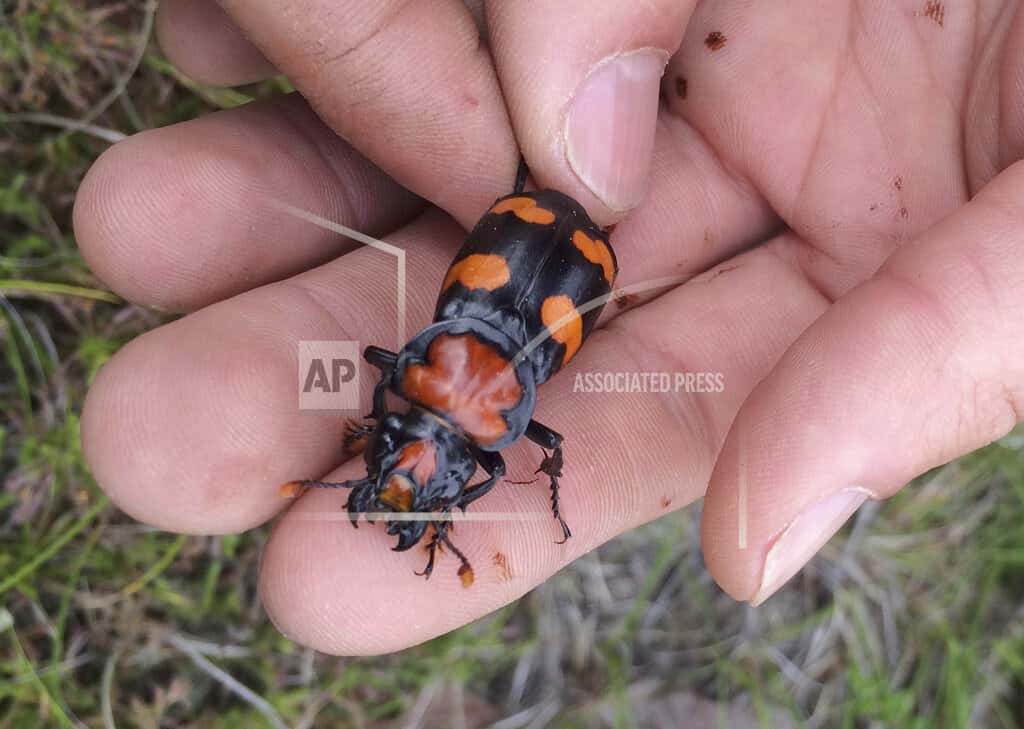
OKLAHOMA CITY (AP) — The Latest on a U.S. Fish and Wildlife Service proposal to take the American burying beetle off the endangered species list (all times local):
4:25 p.m.
Biologists say the government’s decision to change the classification of an endangered scavenging beetle is not supported by scientific data.
The U.S. Fish and Wildlife Service said Wednesday it is proposing to downlist the American burying beetle from endangered to threatened.
Native to 35 states and three Canadian provinces, the beetle was listed as endangered in 1989 when it was found only in eastern Oklahoma and Block Island off the cost of Rhode Island. Thanks to conservation efforts, federal officials say there are now confirmed populations of the American burying beetle in nine states.
Noah Greenwald is endangered species director for the Arizona-based Center for Biological Diversity. He says scientific data indicates that the beetle is even more endangered now, but that President Donald Trump’s administration is severely reducing its habitat protections.
___
11:50 a.m.
U.S. wildlife officials say an endangered carnivorous beetle is making a comeback and should be downlisted to threatened.
The American burying beetle was once found in 35 states and three Canadian provinces. When it was listed as endangered in 1989, it was only in eastern Oklahoma and Block Island off the cost of Rhode Island.
Amy Leuders is the U.S. Fish and Wildlife Services’ southwest regional director. She said Wednesday that conservation efforts over the past 30 years have helped the beetle recover. Leuders says populations now can also be found in Arkansas, Kansas, Missouri, Nebraska, South Dakota, Texas, and on Nantucket Island off the coast of Massachusetts.
The large, nocturnal beetle eats decaying animals. It’s active only in the summer and lays its eggs beside small carcasses that it buries.



